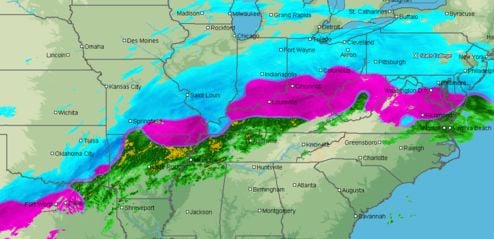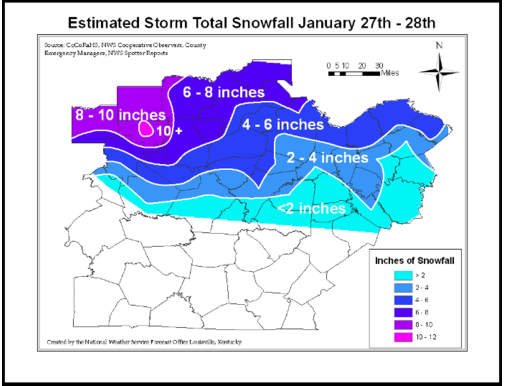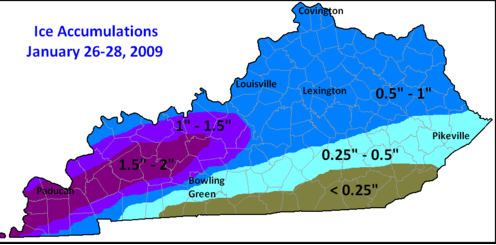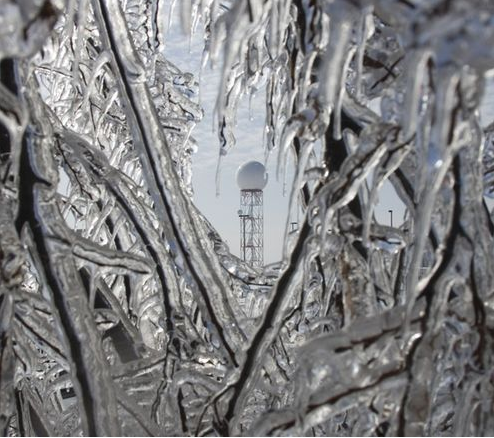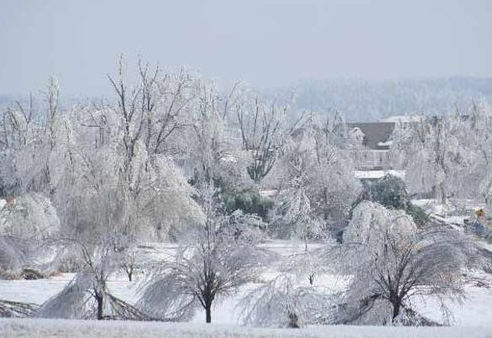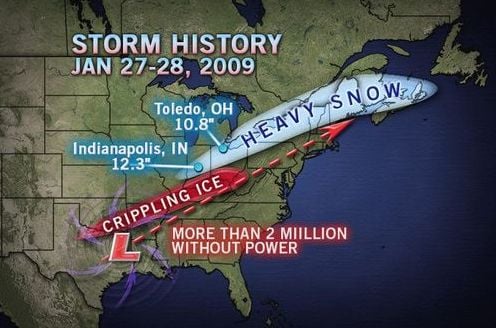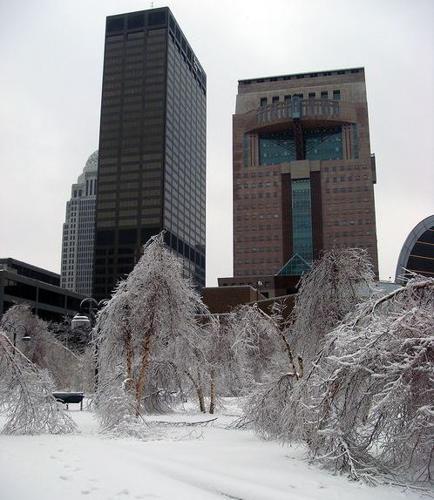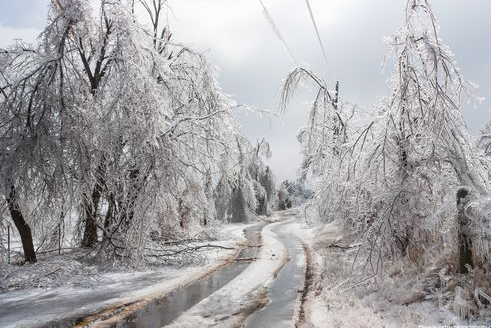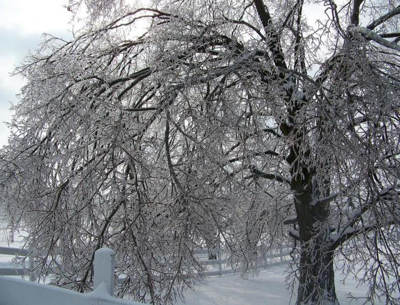It was ten years ago this weekend (January 26-28th), that Kentuckiana was impacted by an intense winter storm.
The storm brought heavy snow and catastrophic icing to the region. In Louisville, the snow totals ranged from 4 to 6 inches. That snow fell on top of nearly 3/4 inches of ice that caused severe damage and it knocked out power for thousands of people.

On January 26-28th, a series of slow moving low pressure systems rippled along a stationary boundary that had stalled across the region. A wintry mix moved into southern Indiana and central Kentucky on the night of Monday, January 26, 2009. Precipitation began as light freezing drizzle and freezing rain over the entire area, but changed to sleet and then snow overnight into the early morning hours of Tuesday across southern Indiana and northern Kentucky. Up to 6 inches of snow accumulated across the northernmost sections of the CWA. Freezing rain continued over southern Kentucky. On Tuesday the 27th, precipitation changed to freezing rain over southern Indiana and northern Kentucky, and to rain over southern Kentucky. This is what the radar looked like on the 27th.

Ice over an inch thick was reported in many locations from the freezing rain. Tuesday night freezing rain and sleet continued over southern Indiana, freezing rain transitioned to rain over northern Kentucky, and rain, occasionally heavy, continued over southern Kentucky. Minor...mainly river flooding developed in some spots by Wednesday from the steady rain. On the morning of Wednesday, January 28, precipitation changed over to snow from northwest to southeast across the area. About 3 to 4 inches of additional snow accumulation piled up in the north, with less to the south.

The storm caused Kentucky's largest power outage on record, with 609,000 homes and businesses without power across the state. Property damage was widespread, with the damage due to falling trees, large tree limbs and power lines weighed down by ice. In the Louisville metropolitan area, 205,000 lost power and it took up to 10 days to get everyone hooked back up. Area school systems were closed for an entire week. Several emergency shelters were set up across the affected region. In Louisville's local school system, 69 schools lost power.

As bad as it was in Central Kentucky, it was worse for western parts of the state were locally two inches of ice covered everything causing catastrophic damage! Kentucky's former governor, Steve Beshear, described it as the biggest natural disaster the state has experienced in modern history. Beshear called in National Guard troops to help clear roads and go door to door to check on families in the western part of the state.

Image courtesy Beau Dodson
This is the account of the storm from the National Weather Service in Paduacah: Life abruptly changed as a growing layer of ice dragged trees and power lines to the ground. Lights and heat went out for days and even weeks. Such basics as food, water, and gas were difficult to obtain. Lines for gas were hours long. Communication by phone was all but impossible, leaving only radio and satellite phones as options. Curfews were imposed at night to prevent looting and to allow recovery crews more space. For the first time, the entire Kentucky National Guard was deployed. Troops helped clear roads, maintain order, and provide for victims' needs. Utility companies reported remarkable damage to their systems: More than 145 miles of high-voltage transmission lines were down in southeast Missouri, and 20 percent of one utility company's system was rebuilt. Shelters quickly filled with hundreds of cold and hungry storm victims. Scarred trees would mark the landscape for years to come. Cleanup of debris would last into the following summer.

Image taken near Manitou Kentucky
By late in the evening of Tuesday, Jan. 27, over 90 percent of southwestern Kentucky was without power. By Feb. 4, power was restored to most residents of cities. However, some rural areas in the hardest hit areas of western Kentucky and extreme southeast Missouri were still facing weeks without power. Trees fell on homes and cars. Numerous trees and power lines blocked roads and caused a major travel hazard in the days following the storm. There were at least fourteen fatalities either directly or indirectly related to the storm.

Some of the worst damage was reported in Oklahoma and Northern Arkansas. In addition to causing massive power outages, the storm claimed 24 lives in Kentucky and another 18 in Arkansas from a combination of traffic accidents, hypothermia and carbon monoxide poisoning. Hopefully, we don't see a repeat of a storm like this anytime soon!

Springdale Arkansas - Image courtesy Mike Hollingshead
